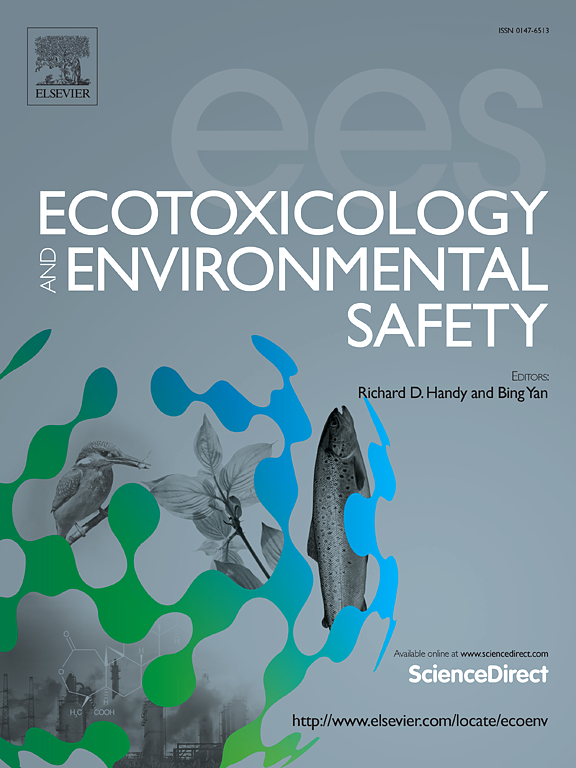Bisphenol B restrains rat leydig cell function via H3K27me3/H3K9me3 histone modifications
IF 6.2
2区 环境科学与生态学
Q1 ENVIRONMENTAL SCIENCES
引用次数: 0
Abstract
As an alternative compound of bisphenol A (BPA), bisphenol B (BPB) was widely used in plastic materials. The potential actions of BPB on the function of Leydig cells through the regulation of H3K27me3 and H3K9me3 remains unclear. Our goal was to assess how BPB influences Leydig cell function via histone modifications mediated by H3K27me3 and H3K9me3. Male 56-day-old Sprague-Dawley rats were given with 0, 50, 100, and 200 mg/kg/day of BPB by the oral administration for 14 days to study the impact of BPB on the function of Leydig cells in rats. The findings indicated that BPB significantly reduced the serum testosterone levels at the dose of 100 mg/kg and 200 mg/kg and follicle-stimulating hormone levels at the doses of 50, 100, and 200 mg/kg, while increasing estradiol levels at the dose of 200 mg/kg. BPB did not alter the numbers of CYP11A1+ Leydig cells and SOX9+ Sertoli cells, but it downregulated the expression of key genes in testosterone synthesis pathway (Lhcgr, Scarb1, Star, Cyp11a1, Cyp17a1, Hsd11b1, Hsd17b3, and Insl3) and their corresponding protein levels. Notably, BPB significantly boosted the expressions of histone methylation markers like EEF1A1, SUZ12, EED, EZH2, H3K27me3, and H3K9me3 in vivo. H3K27me3 and H3K9me3 levels were enhanced at the proximal promoters of Lhcgr, Cyp11a1, and Star through ChIP and PCR analyses. Furthermore, adult Leydig cells were extracted and cultured with BPB (0, 10, 50, 100, and 200 μM) alone or in combination with H3K27me3 antagonist GSK-J4. The results demonstrated that BPB significantly decreased testosterone output, which was counteracted by GSK-J4 to reverse BPB-mediated testosterone suppression. Additionally, BPB significantly elevated the levels of EEF1A1, EEF1A2, EED, H3K27me3, and H3K9me3 in vitro. BPB could potentially hinder the growth and function of Leydig cells by modulating H3K27me3 and H3K9me3. The findings of the study indicate the involvement of histone methylation (H3K27me3) in BPB-induced steroidogenic dysfunction, emphasizing the correlation between histone modifications and male reproductive toxicity.
求助全文
约1分钟内获得全文
求助全文
来源期刊
CiteScore
12.10
自引率
5.90%
发文量
1234
审稿时长
88 days
期刊介绍:
Ecotoxicology and Environmental Safety is a multi-disciplinary journal that focuses on understanding the exposure and effects of environmental contamination on organisms including human health. The scope of the journal covers three main themes. The topics within these themes, indicated below, include (but are not limited to) the following: Ecotoxicology、Environmental Chemistry、Environmental Safety etc.

 求助内容:
求助内容: 应助结果提醒方式:
应助结果提醒方式:


